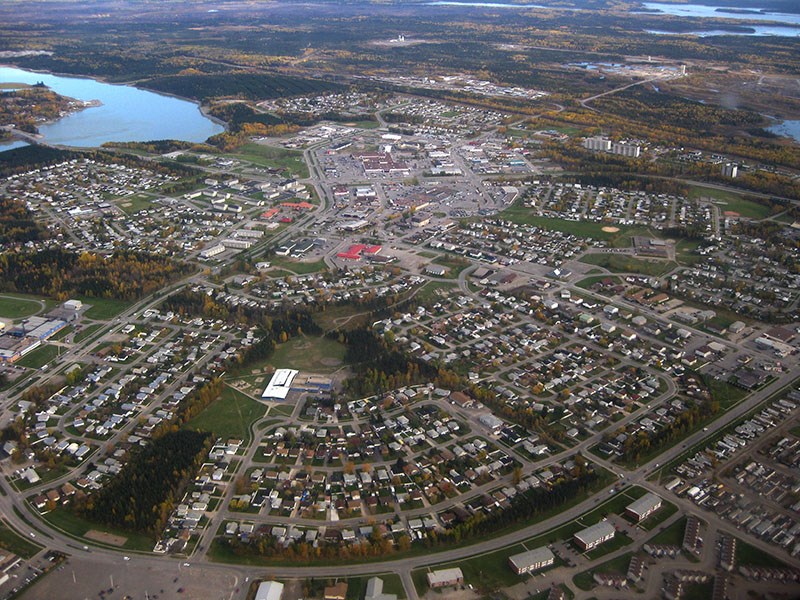Now that we are one-third of the way through March, Thompson residents will spend the next couple of months in a variety of waiting games, mostly relating to factors that are out of most of our control.
First of all, there’s the weather. While the past weekend and Monday weren’t the first days of the year when there were temperatures above freezing in Thompson – it was 1 degree Celsius for a day around the third week of February – it was the first sustained stretch of snow-melting weather and definitely a big improvement from four years ago, when Mother Nature walloped Thompson with an early March blizzard that brought the city almost to a standstill. While this is almost certainly fake spring, as the temperatures are not forecast to get above freezing again until it is actually spring according to the calendar, it is, at the very least, a sign that warmer weather is coming and that, hopefully by the end of April, most of the voluminous amount of snow that Thompson has received this winter will be gone or at least mostly gone, though there is bound to be a storm or two that adds to the total before real spring arrives.
Then, of course, there’s COVID-19. This week will mark one year since the virus was first confirmed to be in Manitoba and, so far, we still aren’t even really close to being back to normal. There is a chance, however, that public health restrictions will be loosened again come March 26, but no one knows at this point what that will look like. There may also be some reason for concern about whether or not any changes made then will apply to the north, which is seeing the bulk of the new cases lately and piling up confirmed tests at a rate well in excess of the region’s sparse population. At this point, it will still be at least a week before the last loosening of restrictions that began March 5 starts having an effect on case numbers, which means that we won’t really know until the end of next week if transmission is starting to rise, holding steady or continuing to fall, at least in most of the province. While we can’t control what the virus does or what other people do, as public health officials have stressed many times, there are some steps we can take – washing hands, wearing masks, staying home, you know the drill – to reduce out own chances of joining more than 32,000 other Manitobans as people who have been infected.
Then, of course, there’s the municipal budget, which will likely be made public and then passed – defeat is generally unlikely given the involvement of all councillors in its development – some time in late April or early May. Taxpayers got their first bit of information about what sort of a bill they’ll be facing this year when the School District of Mystery Lake presented its financial plan Feb. 24. The good news there is that the education portion mill rate is going down, as is the total amount of funding requested via the city in the form of property taxation, by about $80,000 in total compared to last year. The likelihood of the municipal portion following that lead, however, is not goodd. Much of the budget, approximately 70 per cent, is made up of city salaries and benefits as well as what the RCMP receives for providing policing services. For 2020 in particular there were also some unusual revenue pressures, including travel restrictions possibly cutting down on how much the city might collect through the five per cent accommodation tax it levies on hotel room rentals in the city, as well as losing out on user fees for the rental of arenas and other recreational and meeting space at the Thompson Regional Community Centre.
What happens to the municipal portion of the mill rate aside, there are other factors in how much the cost of living in Thompson for 2021 will be. It seems likely that the tax bill will include a new special levy for residential water breaks, at a cost of about $93 for each of 3,241 eligible properties. It’s also time for taxpayers to start paying back the city’s portion of the new sewage treatment plant. Originally, it was expected that property owners would be paying 81 cents per foot of property frontage per year plus a 58 cent rate rider tacked on to water rates over the course of 25 years to pay back the debenture. However, as of 2019, the actual amount the city had had to borrow for that project had gone down by about half as other revenue sources were identified. As a result, those costs were expected to decline by half as well.
Speaking of water rates, those are another factor in the cost of living and the city is seeking to increase the minimum quarterly rate by about eight per cent and the combined water and sewage rate by 13.5 per cent to pay for the cost of operating the utility. If and when those rates take effect is up to the Public Utilities Board of Manitoba, but it seems pretty likely that they will be approved, though the actual amounts may end up being lower or even higher if that’s what the board deems appropriate.
Where the pandemic and Thompson tax bills will be in two months’ time is far from clear at this point. But at least it will definitely be warmer outside by the time we find out.




